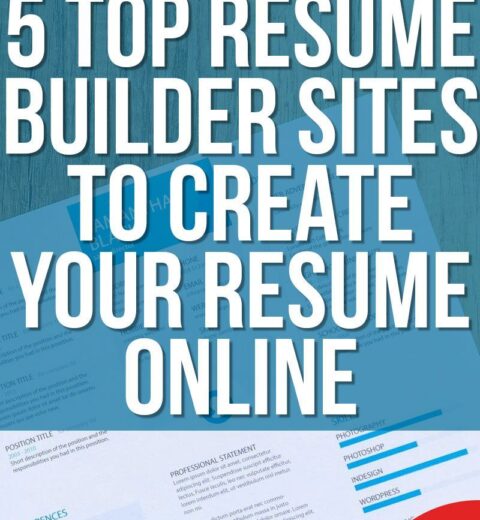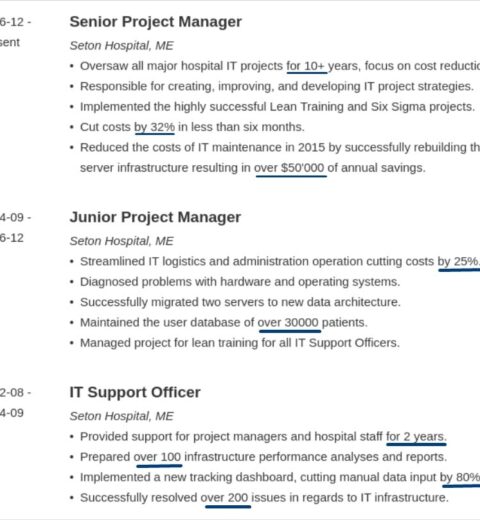Crafting a resume can feel akin to painting a landscape; each stroke of your brush (or letter on the page) should narrate an intricate story of your professional journey. A resume serves not merely as a list of accomplishments, but as a vibrant tapestry woven from the fibers of your experiences, aspirations, and skills. With the advent of 2025, the landscape of job applications demands a contemporary approach to an age-old practice. This guide delineates the components of an effective resume template, offering you the tools necessary to create a masterpiece that stands out amidst a flurry of candidates.
Understanding the Fundamentals
Before diving into the particulars, it is essential to grasp the fundamental purpose of a resume. A resume acts as a marketing tool, designed to sell you—your abilities, experiences, and fit for a role—to prospective employers. Much like a captivating novel, it should invite the reader into your world, laying bare your professional aspirations and the unique qualities that distinguish you from the competition.
Choosing the Right Format
In the diverse realm of resumes, various formats exist. The three predominant types are the chronological, functional, and combination formats. The chronological format is akin to a timeline, illustrating your career progression in a linear fashion. This is advisable for those with a solid employment history in the same field. On the other hand, the functional format prioritizes skills over experience. This format is optimal for career changers or those with gaps in their work history.
Lastly, the combination format marries the two approaches, allowing for a versatile presentation of experiences and competencies. This hybrid format can be particularly compelling, as it reflects both growth and adaptability.
Crafting the Header
Your resume’s header transports the reader into your realm. It should be uncomplicated yet compelling. Begin with your name in a bold, larger font to command attention. Underneath, include your contact information—address, phone number, and email—designed to facilitate easy communication. A nuanced touch could include a LinkedIn profile link or a professional website, broadening the horizon of your qualifications.
Creating a Compelling Summary or Objective
The summary or objective serves as a succinct prelude, encapsulating your professional narrative. Here, you transition from the header to the essence of your being—a brief but impactful statement of who you are as a professional and what you aim to achieve. This is where your metaphorical brush should add vibrant colors to your canvas. Consider incorporating keywords that align with the job description, cleverly intertwining employers’ desires with your capabilities.
A well-crafted objective statement speaks directly to the potential employer, concisely articulating why you are the ideal candidate. This section should be polished until it shines, reflecting your ambitions and capabilities.
Detailing Professional Experience
Employers savor the meatiness found in your professional experience. Each entry should be formatted chronologically, detailing your job title, company name, location, and dates of employment. Below each role, employ bullet points to delineate your responsibilities and achievements, using powerful action verbs to convey success and engagement. For example, instead of stating “responsible for sales,” consider using “spearheaded sales initiatives that boosted revenue by 30% in 2024.” Such phrases are not just fillers; they paint a vivid image of your contributions.
Quantifying achievements adds another layer of depth. Hiring managers appreciate candidates who provide tangible evidence of their impact. Incorporate metrics and statistics where feasible, illuminating your achievements like a beacon in a foggy landscape.
Showcasing Education and Credentials
An education section unveils the foundational knowledge that supports your skill set. Present your degrees in reverse chronological order, including the name of the institution, your degree, and graduation date. For recent graduates, consider highlighting relevant coursework or honors. In an era where lifelong learning is paramount, don’t shy away from mentioning certifications, workshops, or online courses that bolster your qualifications. Each credential adds to your arsenal, making you more appealing to potential employers.
Incorporating Skills
The skills section is where you can further distinguish yourself. Focus on both hard and soft skills that are pertinent to the position. While technical skills might serve as the bedrock of your professional identity, soft skills illuminate your interpersonal prowess. Skills like leadership, adaptability, and communication are often prized in today’s collaborative workplaces.
Utilize this section to reflect not only your abilities but also your potential for growth. Alluding to ongoing development demonstrates your commitment to personal and professional evolution.
Professional Affiliations and Volunteer Work
Professional affiliations and volunteer work are akin to the intricate details in a painting that give depth and character. Inclusion of these addendums can showcase your engagement with the wider community and professional landscape. Employers appreciate candidates who exhibit passion through involvement in organizations, trade associations, or philanthropic efforts. This section encapsulates a holistic view of your personality beyond mere qualifications.
Final Touches and Aesthetic Appeal
Once you have meticulously assembled the content of your resume, turn your attention to the aesthetics. The layout should be clean and organized; ample white space will guide the reader’s eyes effortlessly through the document. Resumes should be visually appealing without being overwhelming—using contemporary fonts and a subtle color palette can elevate your presentation.
Also, ensure consistency in formatting. Uniformity in bullet points, font sizes, and headers reflects attention to detail, a trait highly coveted in any profession. Finally, proofreading is indispensable; typos or grammatical errors can tarnish an otherwise impeccable presentation.
In a world saturated with competition, a resume serves as your ticket to opportunity—a gateway through which employers enter to discover your unique value proposition. Employing the elements discussed, your 2025 resume template can evolve into an engaging and effective narrative that resonates with your audience and propels you toward your career aspirations.



